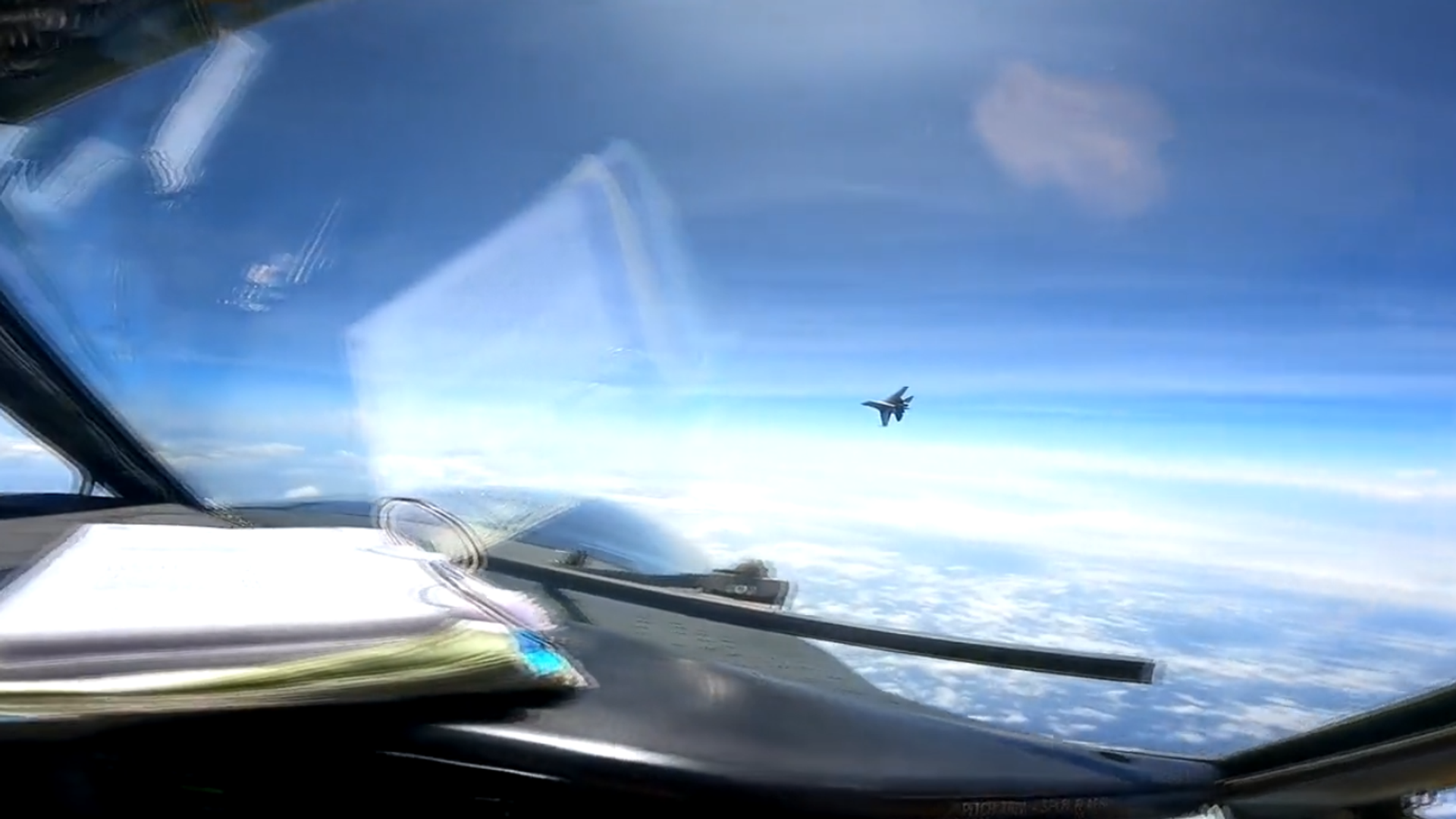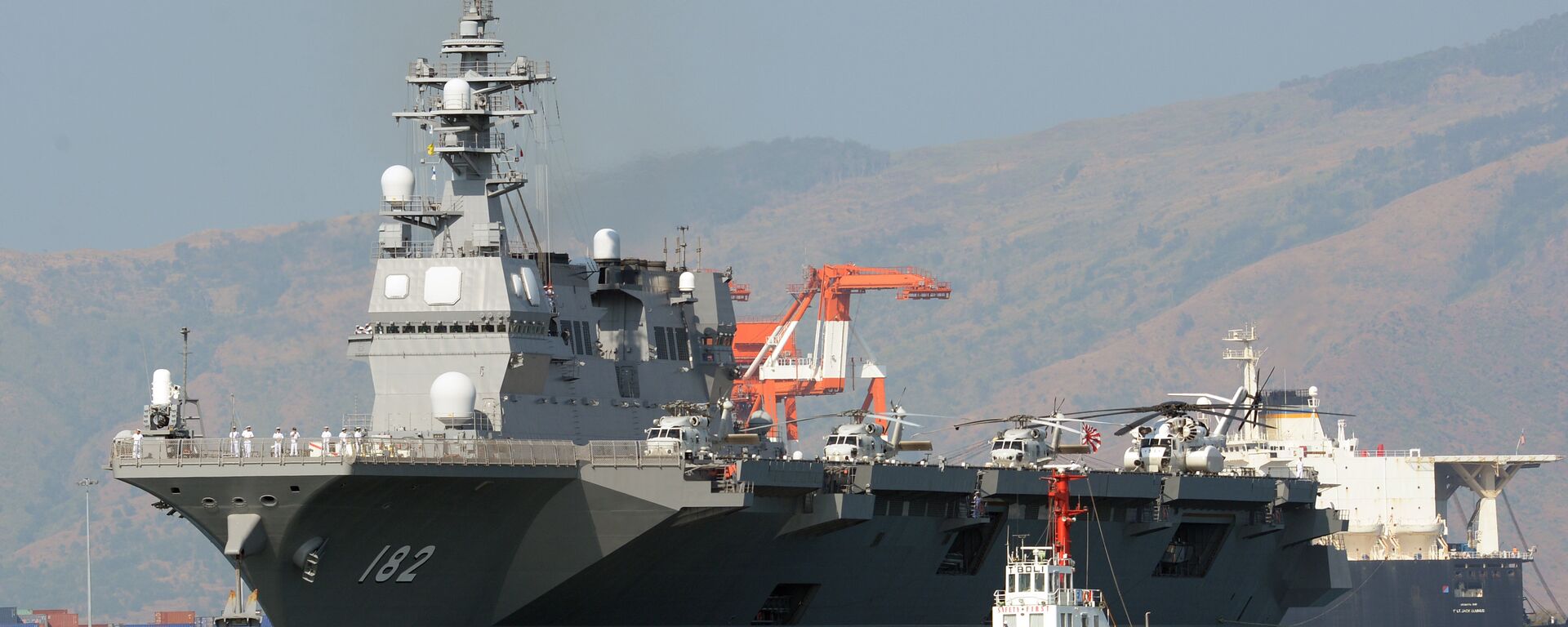https://sputnikglobe.com/20230531/beijing-reveals-whose-provocative-actions-led-chinese-jet-to-buzz-us-spy-plane-1110818043.html
Beijing Explains Whose ‘Provocative Actions’ Led Chinese Jet to Buzz US Spy Plane
Beijing Explains Whose ‘Provocative Actions’ Led Chinese Jet to Buzz US Spy Plane
Sputnik International
The Pentagon has accused a People’s Liberation Army Air Force J-16 fighter of engaging in “aggressive” and “unprofessional” maneuvers near a US spy plane conducting “routine operations” in airspace over the South China Sea last Friday. China has warned the US repeatedly against conducting military operations in or over the body of water.
2023-05-31T14:06+0000
2023-05-31T14:06+0000
2023-05-31T14:11+0000
hillary clinton
china
mao ning
south china sea
washington
pentagon
chinese foreign ministry
us indo-pacific command
j-15
united nations convention on the law of the sea (unclos)
https://cdn1.img.sputnikglobe.com/img/07e7/05/1f/1110817783_19:0:1402:778_1920x0_80_0_0_1b15f08f29d849f242c0e0185d57d938.png
Washington’s "provocative and dangerous" military reconnaissance activities, including the use of carrier-based aircraft to conduct spy missions against China, are to blame for the escalating tensions in the South China Sea, Chinese Foreign Ministry spokeswoman Mao Ning has said.“The United States’ long-term and frequent sending of ships and planes to conduct close surveillance on China seriously harms China’s national sovereignty and security,” Mao said in a press briefing on Wednesday.Mao’s comments follow complaints from US Indo-Pacific Command about an incident said to have taken place last Friday involving a Chinese J-15 jet intercepting and flying alongside a US Air Force RC-135 reconnaissance aircraft over the South China Sea, and then jetting off directly in front of the plane, “forcing the US aircraft to fly through its wake turbulence.”USINDOPACOM called the maneuver “unnecessarily aggressive,” and assured that its own plane was conducting “routine operations…in international airspace” and “in accordance with international law.”China has frequently warned the US to stop engaging in air and naval maneuvers through contested waters in the South China Sea which the People’s Republic claims as its own. Washington has refused to heed these calls, stressing that it will continue to engage in such operations, which it has dubbed “freedom of navigation” missions, and sought to forge regional security ties with other nations and territories with claims to the body of water, including Indonesia, the Philippines, Malaysia, Brunei, Vietnam and Taiwan.China has worked to try to resolve the maritime territorial disputes in the South China through negotiations, signing a landmark framework with ASEAN bloc nations in 2002 known as the ‘Declaration on the Conduct of Parties in the South China Sea’.Further negotiations on a common framework for interaction and dispute resolution have been slow, particularly after former Secretary of State Hillary Clinton announced in 2010 that the “freedom of navigation” and “open access to Asia’s maritime commons” in the South China Sea were matters of US “national interest.” Washington itself has no direct territorial claims on the body of water.Geologists and fisheries experts believe that the South China Sea is brimming with tens of trillions of dollars’ worth of oil, gas and fishing resources. The body of water is also a strategic trade artery, with over $3 trillion in goods passing through it every year.Along with the United States, Britain and Australia have sent their own warships and aircraft into the South China Sea on “freedom of navigation” missions – which have turned into a favorite tool of Western countries to maintained unrestricted access to global waters – despite Washington’s refusal to join the 1982 United Nations Convention on the Law of the Seas. US officials have recently proposed similar tactics in the thawing Arctic waters off northern Russia, where Moscow is working to create a massive new trade corridor known as the Northern Sea Route. However, here Washington has faced difficulties, given the more than 50-to-1 disparity in the number of Arctic-class icebreakers between Russia and the US.
https://sputnikglobe.com/20230529/philippine-coast-guard-to-hold-first-ever-joint-drills-with-us-japan-1110762277.html
https://sputnikglobe.com/20220605/aussie-spy-plane-engines-ingested-chinese-chaff-during-intercept-in-south-china-sea-canberra-claims-1096029499.html
china
south china sea
washington
Sputnik International
feedback@sputniknews.com
+74956456601
MIA „Rossiya Segodnya“
2023
News
en_EN
Sputnik International
feedback@sputniknews.com
+74956456601
MIA „Rossiya Segodnya“
US accuses Chinese J-16 jet of “unnecessarily aggressive maneuver” in front of RC-135 reconnaissance plane
Sputnik International
US accuses Chinese J-16 jet of “unnecessarily aggressive maneuver” in front of RC-135 reconnaissance plane
2023-05-31T14:06+0000
true
PT0M27S
Sputnik International
feedback@sputniknews.com
+74956456601
MIA „Rossiya Segodnya“
china, united states, south china sea, fighter jet, intercept, provocation, maneuvers, buzzing, incident, spy plane
china, united states, south china sea, fighter jet, intercept, provocation, maneuvers, buzzing, incident, spy plane
Beijing Explains Whose ‘Provocative Actions’ Led Chinese Jet to Buzz US Spy Plane
14:06 GMT 31.05.2023 (Updated: 14:11 GMT 31.05.2023) The Pentagon has accused a People’s Liberation Army Air Force J-16 fighter of engaging in "aggressive" and "unprofessional" maneuvers near a US spy plane conducting "routine operations" in airspace over the South China Sea last Friday. China has warned the US repeatedly against conducting military operations in or over the body of water.
Washington’s "provocative and dangerous" military reconnaissance activities, including the use of carrier-based aircraft to conduct spy missions against China, are to blame for the escalating tensions in the South China Sea, Chinese Foreign Ministry spokeswoman Mao Ning has said.
“The United States’ long-term and frequent sending of ships and planes to conduct close surveillance on China seriously harms China’s national sovereignty and security,” Mao said in a press briefing on Wednesday.
“This kind of provocative, dangerous activity is the cause of the security issues on the seas. China will continue to take all necessary measures to resolutely protect its sovereignty and security,” the spokeswoman said.
Mao’s comments follow
complaints from US Indo-Pacific Command about an incident said to have taken place last Friday involving a Chinese J-15 jet intercepting and flying alongside a US Air Force RC-135 reconnaissance aircraft over the South China Sea, and then jetting off directly in front of the plane, “forcing the US aircraft to fly through its wake turbulence.”
USINDOPACOM called the maneuver “unnecessarily aggressive,” and assured that its own plane was conducting “routine operations…in international airspace” and “in accordance with international law.”
China has frequently warned the US to stop engaging in air and naval maneuvers through contested waters in the South China Sea which the People’s Republic claims as its own. Washington has refused to heed these calls, stressing that it will continue to engage in such operations, which it has dubbed “freedom of navigation” missions, and sought to forge regional security ties with other nations and territories with claims to the body of water, including Indonesia, the Philippines, Malaysia, Brunei, Vietnam and Taiwan.
China has worked to try to resolve the maritime territorial disputes in the South China through negotiations,
signing a landmark framework with ASEAN bloc nations in 2002 known as the ‘Declaration on the Conduct of Parties in the South China Sea’.
Further negotiations on a common framework for interaction and dispute resolution have been slow, particularly after former Secretary of State Hillary Clinton
announced in 2010 that the “freedom of navigation” and “open access to Asia’s maritime commons” in the South China Sea were matters of US “national interest.” Washington itself has no direct territorial claims on the body of water.
Geologists and fisheries experts believe that the South China Sea is brimming with
tens of trillions of dollars’ worth of oil, gas and
fishing resources. The body of water is also a strategic trade artery, with
over $3 trillion in goods passing through it every year.
Along with the United States, Britain and Australia have sent their own warships and aircraft into the South China Sea on “freedom of navigation” missions – which have turned into a favorite tool of Western countries to maintained unrestricted access to global waters – despite Washington’s refusal to join the 1982 United Nations Convention on the Law of the Seas. US officials have recently proposed similar tactics in the thawing Arctic waters off northern Russia, where Moscow is working to create a massive new trade corridor known as the Northern Sea Route. However, here Washington has faced difficulties,
given the more than 50-to-1 disparity in the number of Arctic-class icebreakers between Russia and the US.



